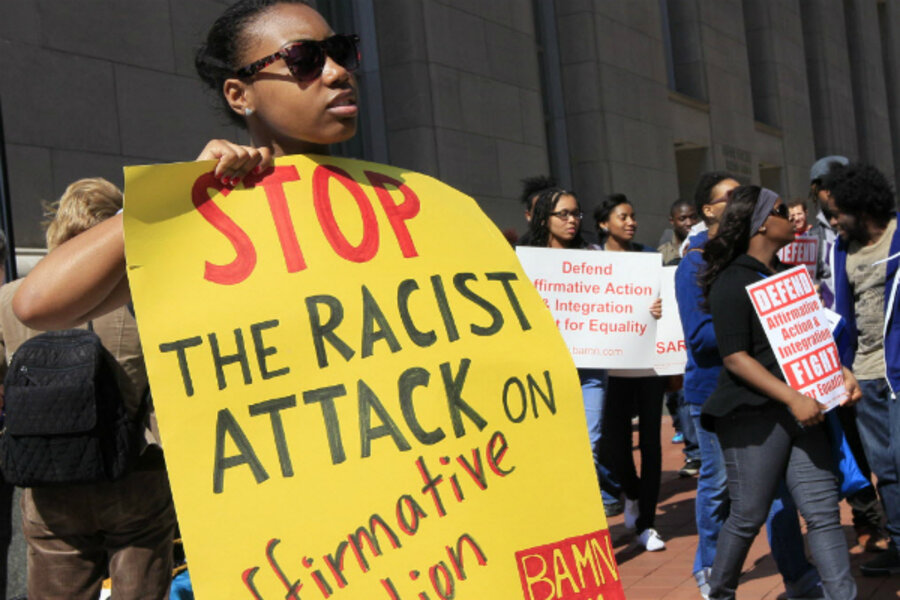US Supreme Court to take up Michigan affirmative action case
Loading...
| Washington
The US Supreme Court on Monday agreed to examine whether a 2006 ballot initiative banning affirmative action at public universities in Michigan violates the equal protection rights of minorities.
Fifty-eight percent of Michigan voters approved Proposal 2, which amended the state constitution to prohibit discrimination or preferential treatment in college admissions based on race, sex, ethnicity, or national origin.
Civil rights groups and minority students sued to block the measure, arguing that the constitutional amendment erected disadvantageous barriers to those advocating for the use of racial identity and ethnic background to grant preferential consideration to minority candidates by college admissions officers.
By targeting racial classifications in college admissions, proponents of the ban on racial classifications were themselves guilty of using such classifications, they argued.
A federal judge disagreed and upheld Proposal 2. A sharply divided Sixth US Circuit Court of Appeals reversed, ruling 8 to 7 that the ban on affirmative action violated the Equal Protection Clause of the 14th Amendment.
The central issue in the case is what the Constitution’s guarantee of equal protection actually protects.
It is well established that it protects against political obstructions that would hinder or undermine equal treatment of black students and white students.
But the question in the Michigan case is whether it also protects against political obstructions that make it more difficult for minority students to obtain preferential treatment in college admissions based on race or ethnicity.
“It is exceedingly odd to say that a statute which bars a state from discriminating on the basis of race violates the Equal Protection Clause because it discriminates on the basis of race and sex. Yet that is precisely what the [Sixth Circuit] majority held here,” Michigan Solicitor General John Bursch wrote in his brief to the high court.
“Until now, no court has ever held that, apart from remedying specific past discrimination, a government must engage in affirmative action,” Mr. Bursch said.
He said the case presented a question of "immense importance."
At issue is whether state governments are free to replace race-conscious affirmative action admissions plans with race-neutral alternatives as a means to achieve classroom diversity.
In addition to Michigan, seven other states have undertaken such efforts: Arizona, California, Florida, Nebraska, New Hampshire, Oklahoma, and Washington.
The petition reached the high court at a time when the justices are preparing to rule on whether a race-based affirmative action plan at the University of Texas violates the equal protection rights of white students applying for admission.
There are two different groups that filed suit against Proposal 2. One urged the Supreme Court to take up the case; the other said the justices should not hear the case.
If the court had declined to hear the case it would have permitted the Sixth Circuit decision to remain in full force in the four states covered by that appeals court.
“The vice of Proposal 2 is that it selectively shuts off access to the ordinary political process for advocates of otherwise constitutionally permissible race-conscious policies,” wrote Mark Rosenbaum, a lawyer with the ACLU Foundation of Southern California, in his brief urging the court not to take up the case.
He said the ballot initiative entrenched the anti-affirmative action approach in the state constitution, making it extremely difficult for supporters of affirmative action to repeal it. Yet, at the same time, those advocating race-neutral admissions factors such as legacy status, socioeconomic background, or athletics are still able to use less burdensome avenues to change or maintain admissions policies. This represents unequal treatment, he said.
Another lawyer challenging the ballot initiative, George Washington of Detroit, says in his brief that Proposal 2 creates an unequal structure of government that imposes on minority students a burden no other citizens have to endure when seeking to change admissions standards.
“Proposal 2 deprived racial minorities of equal political rights by prohibiting the governing bodies [of public universities] from adopting by simple majority vote any plan that granted ‘preferential treatment’ to minority applicants,” Mr. Washington said.
In urging the high court to take up the case, Washington says the Sixth Circuit decision is in conflict with a decision in the Ninth Circuit upholding California’s ban on race-based affirmative action. He said the split was deep and irreconcilable.
“Many well-qualified minority students can only gain admission to leading universities if those universities have adopted a lawful affirmative action program,” he wrote.
He defined the issue as whether “a state may deny a racial minority the right to fight for the adoption of programs that will allow its youth to attend the universities.”
The case, Schuette v. Coalition to Defend Affirmative Action (12-682), will be heard in the court’s next term, which begins in October.





